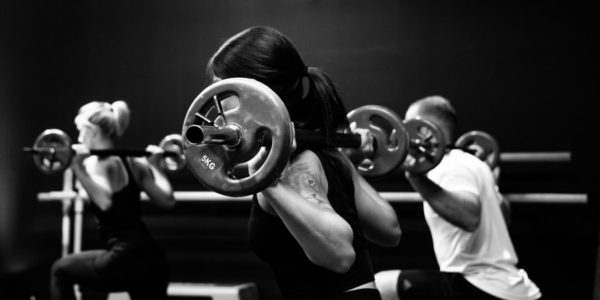When many think of core strength, they only think of the abdominal muscles and focus on strengthening this area. However, there are four other major groups that also help form the core. These are the hips, back, pelvis and buttocks. This article focuses on the back and the important link between core strength and back pain.
The muscles in the back engage in almost everything we do. From bending over when putting on our shoes, sitting in our chairs at work, carrying laundry to the washing machine, carrying in the groceries, or even walking in a straight line, they are always there supporting us. But we have to do our part in supporting them.

Back Pain Statistics
According to the National Institute of Neurological Disorders and Stroke, 60% to 70% of people between the ages of 30 and 50 will get their first back pain issue. As we age, our chances of getting back pain increases. Bone density loss, and a reduction of muscle elasticity and tone are just two reasons for the increased risk.
But there is one other factor that if ignored will eventually catch up with us as far as back pain is concerned – poor core strength. We know that muscle elasticity and tone are contributors to an increased risk of back pain, but these two determining factors can also be managed through core strength exercises.
Exercise Safety
Generally speaking, you’ll want to avoid exercises that bend or flex your spine. Instead go for the neutral position ones – ones that keep your spine straight. Bridges and planks are good for building the erector spinea that support the spine and abs. A yoga or pilates tailored routine to reduce back pain can be quite effective for many people. Not only is the back strengthened, but many researchers also believe these exercise disciplines help the brain better manage pain, so between the two, less back pain is felt.
Resistance based exercises such as lunges and squats build strength in the hips, buttocks and pelvis. So if this article is about building back core strength, why am I worried about building strength in the other groups of core muscles? Because creating great back core strength and conversely being weak in other core areas creates muscle imbalances and at some point can result in an injury, or doesn`t help ease your back pain at all.

Creating Balance
If you build strength in one area, you have to offset it by building strength in the opposing muscle groups for optimal results and functional balance. That way you end up with an evenly developed core that can better support your spine and at the same time lower your risk for a back injury.
If you have back pain, its always worth seeing your local GP to ensure you do not have any injury or something more serious that needs to be identified. However, once cleared to exercise, use the information in this article to strengthen your back muscles and alleviate your back pain.
If you are unsure how to perform these types of exercises, it may be worth investing in the services of a knowledgeable personal trainer who can support and guide you whilst also making sure you have correct posture and technique.






